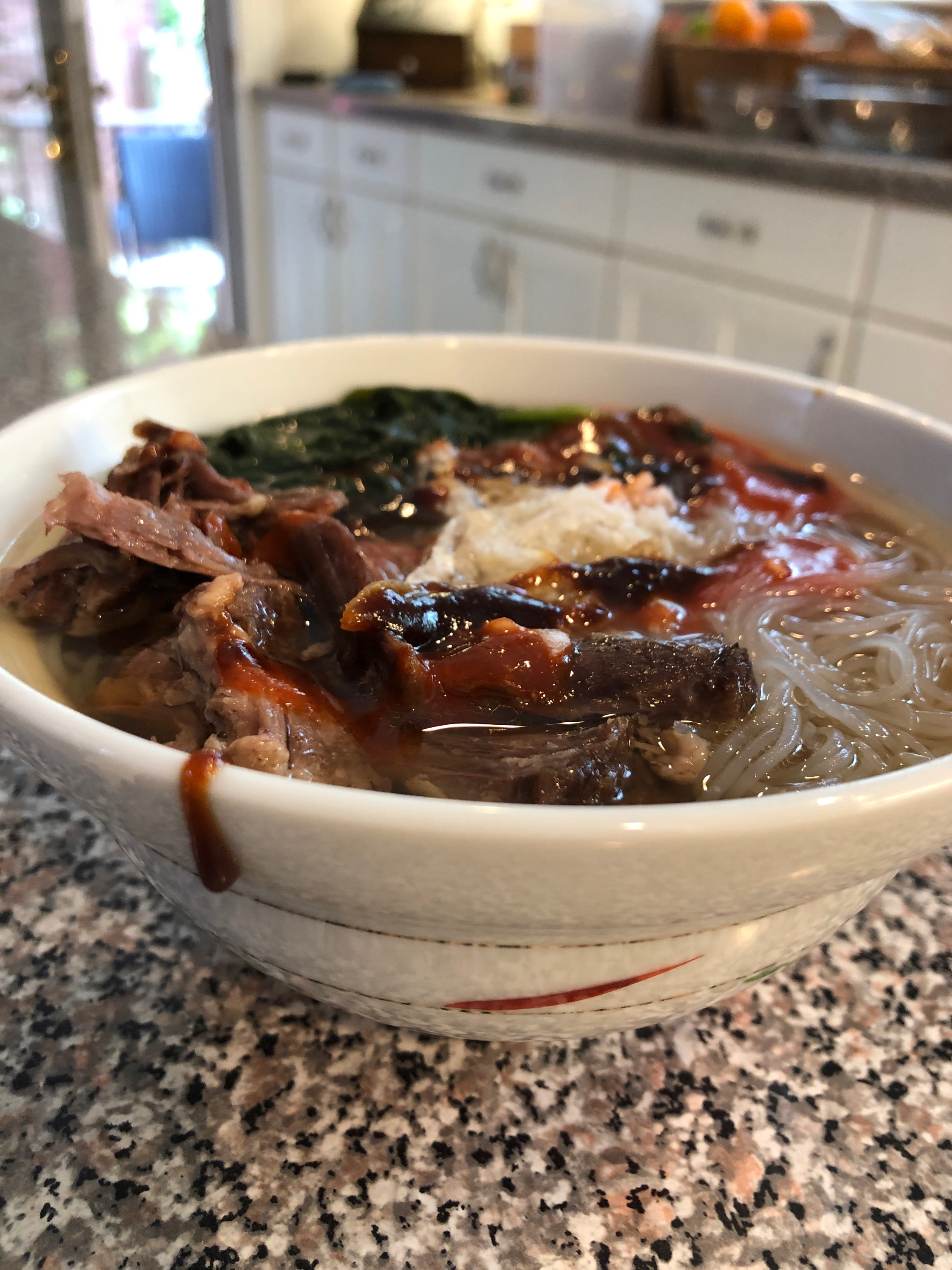Instant Pot® Pho

Pho in the Instant Pot® takes only 2 1/2 hours versus a whole day of cooking and simmering! Serve with greens, bean sprouts, cilantro, Thai basil. Garnish with hoisin sauce, Sriracha, and quartered limes.
INGRIDIENT
DIRECTION
Step: 1
Place oxtail in a large, heavy pot. Cover with water and bring to a boil over medium-high heat. Boil for 5 minutes. Remove from heat, pour out water, and rinse oxtail to remove excess fat and impurities. Place in a multi-functional pressure cooker (such as Instant Pot®).
Step: 2
Use tongs to hold ginger over a burner flame to char slightly. Allow to cool, then quarter. Char onion quarters in the same way.
Step: 3
Combine cinnamon stick, cardamom, cloves, star anise, coriander, and fennel in a shallow, dry saute pan. Toast over medium-low heat for 2 minutes. Place spices in a tea filter bag and close.
Step: 4
Add ginger, onion, and spice bag to the pressure cooker. Pour in enough water to cover. Add fish sauce, green onions, sugar, and salt. Close and lock the lid. Seal the vent and select high pressure according to manufacturer’s instructions; set timer for 120 minutes. Allow 10 to 15 minutes for pressure to build.
Step: 5
Release pressure using the natural-release method according to manufacturer’s instructions, 10 to 40 minutes.
Step: 6
Meanwhile, place rice noodles in a large bowl and cover with hot water. Set aside until noodles soften, about 15 minutes.
Step: 7
Skim the broth if necessary. Taste and add more fish sauce, sugar, or salt. Discard ginger, onions, and spice bag. Remove oxtail from the broth and shred meat away from the bones and cartilage.
Step: 8
Fill bowls with rice noodles and top with meat and broth.
NUTRITION FACT
Per Serving: 721 calories; protein 71.6g; carbohydrates 38.5g; fat 30.9g; cholesterol 249.7mg; sodium 1627.4mg.
The name of “stew” can process to both a dish and a cooking method. Stewing makes slowly cooking chunks of meat, vegetables or beans in a flavorful water based . It’s similar to braising, instead it does have a few piece of differences. The raw animal vested is chopped into few of pieces instead of being cooked whole , and the liquid all of it covers the essential in a stew as compared to a braise’s halfway full . When meat or raw fruit are cooked using this method, the resulting dish is called stew.
Stew has a perception for being a rib-sticking meal that warms you up on a cold , winter day. It’s right that ; a bowl of old menu of beef stew can make warming featured food , but stew’s cozy factor goes way beyond preserving you from the chill . It’s all about those soft and chunks of food and vegetables, swimming in a thick, ultra-rich gravy. The more they come together creates the greatest comfort food, no matter the weather.





